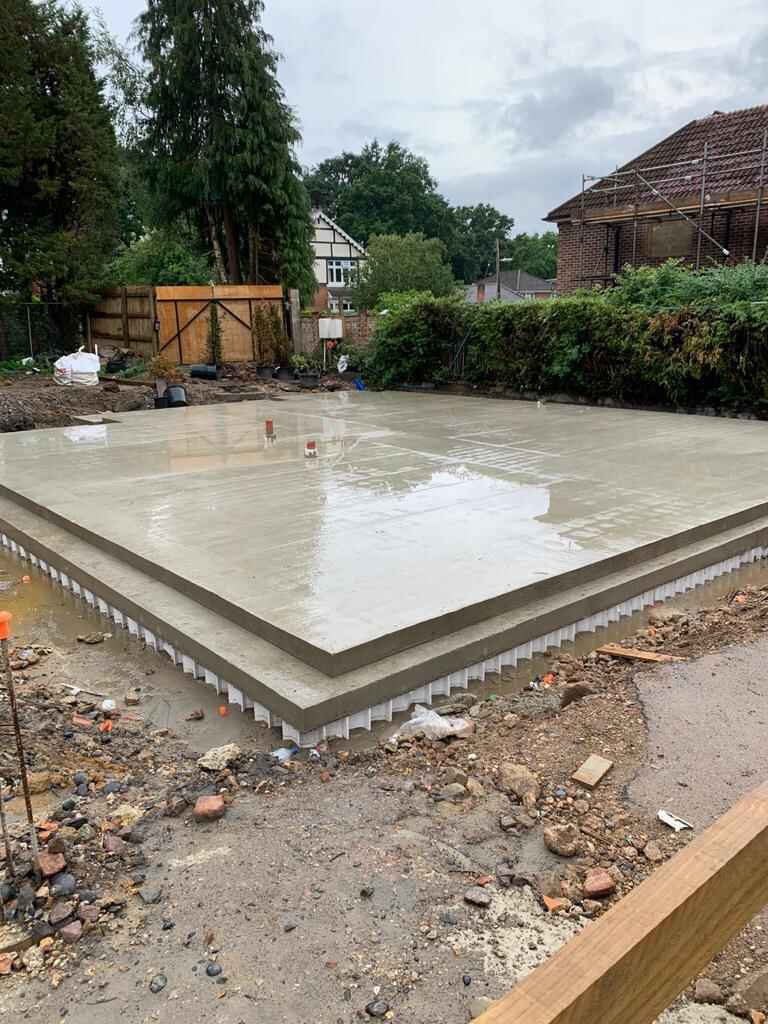
We cater for the following:
Reinforced Concrete Retaining Walls
Reinforced concrete retaining walls are strong structures that hold back soil or water. They are commonly used in gardens, highways, and construction sites to prevent soil erosion and manage land slopes. At Reinforced Concrete Contractors Hampshire, we specialize in designing and constructing durable retaining walls tailored to your specific needs, ensuring stability and longevity for your property.
Reinforced Concrete Frames
Reinforced concrete frames are the foundation of a contemporary structure. They include beams and columns that provide support and stability. These frames can resist heavy loads and environmental forces like wind and earthquakes. Reinforced Concrete Contractors Hampshire forges above its competition in establishing high-quality concrete frames for residential, commercial, and industrial projects that are feats of strength and precision.
Reinforced Concrete Columns
Reinforced concrete columns are vertical structures meant to support the weight of structures like buildings and bridges. These elevate all the loads from roofs and floors to the foundation of a building. Reinforced Concrete Contractors, Hampshire, creates strong concrete columns that meet engineering standards with the highest accuracy for increased reliability in your structures.
Reinforced Concrete Slabs
Reinforced concrete slabs are even horizontal surfaces primarily used in floors, roofs, and ceilings. They are made to withstand bearing loads and produce a strong building foundation. Reinforced Concrete Contractors Hampshire offers custom-made slab designs for homes, offices, and industrial spaces. These slabs are known for their strength and longevity in every installation setting.
Reinforced Concrete Sea Walls and Quays
Reinforced concrete sea walls and docks are crucial for any coastal assistance. They withstand harsh marine conditions, protecting shorelines and creating safe docking areas. At Reinforced Concrete Contractors Hampshire, we design and build sea walls and quays that offer long-term resistance against waves, erosion, and tidal forces, safeguarding your coastal property.
Reinforced Concrete Swimming Pools
Reinforced concrete swimming pools are known for their durability and adaptability in design. Be it for personal or corporate necessity – the pools we would construct would take on the form that you require. Reinforced Concrete Contractors, Hampshire delivers expertly crafted concrete swimming pools that combine functionality with aesthetic appeal, ensuring years of enjoyment.
Reinforced Concrete Basements
Reinforced concrete basements are built below ground level to create extra space for storage, parking, or living. They are generally strong, waterproof, and can withstand soil pressure. Reinforced Concrete Contractors Hampshire boasts a high-quality standard when constructing concrete basements for commercial and residential needs.
Insitu Staircases
Insitu ground floors, bases, and decks are constructed directly on-site using reinforced concrete, ensuring precision and strength. These elements are essential for industrial facilities, warehouses, and multi-story buildings. Reinforced Concrete Contractors Hampshire delivers exceptional on-site construction services, meeting your specifications with high-quality materials and expert craftsmanship.
Reinforced Pad Foundations
Reinforced pad foundations are shallow concrete bases used to support columns or load-bearing walls. They evenly distribute the structure’s weight and prevent settling. Reinforced Concrete Contractors, Hampshire provides expertly constructed pad foundations ideal for small to medium-sized buildings, ensuring a strong and stable base.
Insitu Ground Floors, Bases, and Decks
Insitu ground floors, bases, and decks are constructed directly on-site using reinforced concrete, ensuring precision and strength. These elements are essential for industrial facilities, warehouses, and multi-story buildings. Reinforced Concrete Contractors Hampshire delivers exceptional on-site construction services that meet your specifications with high-quality materials and expert craftsmanship.
Residential and Commercial formwork and falsework
The Reinforced Concrete Contractors team in Hampshire accepts all kinds of work, whether residential or commercial. We have a large number of pieces of equipment for commercial or residential formwork and falsework, including steel plates, rods, and clamps to build custom formwork and falsework.
Capping beams
To make all the pilling strong and hold them together, capping beams are constructed on top of the piles using reinforced bars and concrete. Our expert team at RCC offers excellent service in constructing capping beams that create a strong foundation for your house. In Hampshire, our contractors are dedicated to delivering customised concrete solutions to customers. We also offer services such as reinforced concrete basements, columns, slabs, RC walls, etc.


